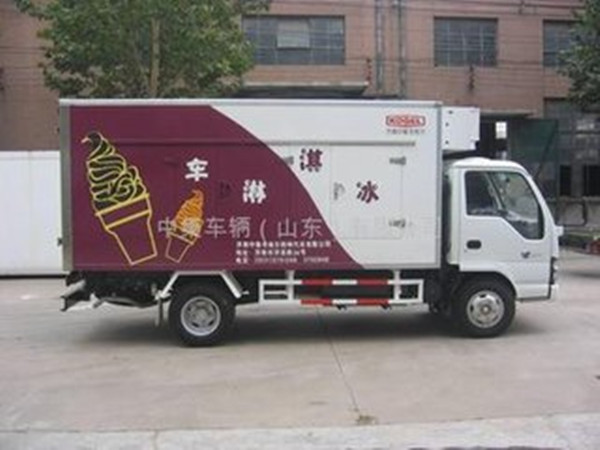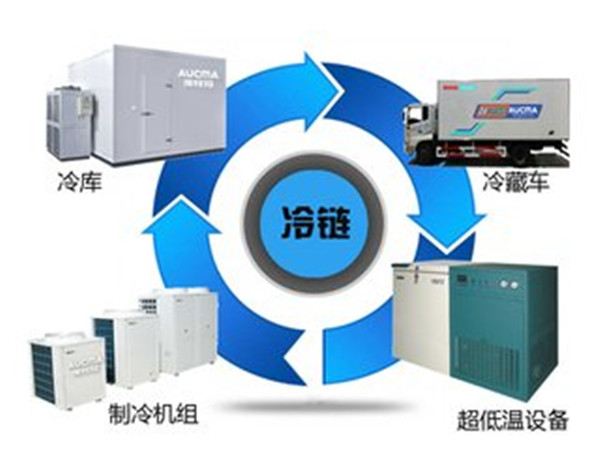With the advancement of scientific technology and the development of refrigeration technology, it is also based on refrigeration technology, using refrigeration technology as a means to comply with the GMP and GSP management of pharmaceuticals. , is a special logistics form that requires special equipment, attention to the delivery process, time control and transport patterns. In general, pharmaceuticals that are stored at low temperatures (2 degrees to 8 degrees) are in the category of pharmaceutical refrigeration logistics . According to statistics, the sales amount of pharmaceutical cold collections generally accounts for 3% to 8% of the total sales volume of pharmaceutical distribution companies in China. Although the proportion is not too large, it has gradually increased in recent years, and with the country's pharmaceutical drugs With the further management of laws and regulations in place, pharmaceutical refrigeration logistics will become a key area for development in China's pharmaceutical logistics industry. With the continuous development of our country's economy, the level of medical insurance has greatly increased, and the logistics process requirements for pharmaceutical products have also gradually increased. The pharmaceutical market in China has developed rapidly and has huge growth potential. Behind the fiery medical industry, the total market demand for pharmaceutical refrigeration logistics will reach nearly 10 billion yuan. However, at present, there are not many enterprises in China that can provide customers with suitable refrigeration logistics services. Therefore, the pharmaceutical refrigeration logistics field is another effective development space for China's pharmaceutical logistics industry. 2. Cold drink market: The total consumption of the cold drink market in China has increased from 550,000 tons in the 1990s to 1.47 million tons in 2002. Seasonal differences in consumption have gradually disappeared, but compared with the world average and the developed countries, there is a big gap and the market has great potential. According to a survey conducted by the Shanghai Food Research Institute, the national cold drink output reached 2 million tons in 2005, and reached 2.6 million tons in 2010. The per capita consumption can reach 2 kilograms per year; the annual production and sales volume in 2015 will reach 3.1 million tons, per capita consumption. Can reach 2.4 kg/year. With the changes in the consumption habits of cold drinks, the increase in per capita income, the continuous expansion of consumer groups, and the development of urbanization in China, the production and sales of cold drinks will continue to show an upward trend for some time. China's cold drink production enterprises are mainly concentrated in the more economically developed areas of East China, North China, and Central and South China. Guangdong, Beijing, Shanghai, and Northeast China are currently the four regions with the most concentrated production and sales. In 2002, there were only 9 large-scale enterprises that sold over 100 million yuan in the cold beverage industry, and 18 medium-sized companies. Among them, Yili, Inner Mongolia, produced and sold more than 100,000 tons, and achieved sales of nearly 900 million yuan, ranking first in the industry. Yili, Helu Snow, Guangming, Nestle, Mengniu and other brands in the mainstream market share of more than 80%, has initially formed an oligopoly situation. Although the production and sales of domestic cold drinks have risen steadily, due to fierce market competition, cold drink production has entered the era of meager profits. Statistics show that the lowest average annual sales margin of the food industry is the frozen drinks industry, and the industry as a whole is in a state of deficit. However, in any case, the development of the company and the distribution of products are closely related to the refrigerated trucks. 3. Meat product market: According to relevant statistics, domestic meat consumption has increased from 63.73 million tons in 2001 to about 100 million tons in 2010, and it continues to maintain a steady upward trend. It can be expected that the future growth space will remain huge. China's meat processing industry has undergone a market start-up phase and it is currently in a period of growth. This stage is characterized by the rapid growth of consumer groups, but the per capita possession of meat products is much lower than in developed countries. Sustained economic growth, sufficient domestic demand, and strong international demand are the main drivers of growth in meat consumption. In the next 10 years, the meat processing industry will enter a new period of rapid development. The consumption of meat products has greater potential for growth in rural areas in addition to the expansion of the city. With the acceleration of the process of rural urbanization in our country and the increase in the income level of farmers, the consumption of meat food will continue to grow over a longer period of time. According to statistics, in 2010, the per capita annual consumption of meat products in China will reach 10 kilograms, and the proportion of meat products in total meat production will rise to around 13%, but it will only reach the level of 1/3 of the meat conversion rate in the developed countries. The profit rate of the meat processing industry is 2.93% and the economic benefits are relatively good. Among the meat products enterprises in 2002, there were 2 sales revenues exceeding 5 billion yuan, namely Henan Shuanghui Industrial Group Corporation and Shandong Jinyu Enterprise Group Corporation. There are two more than two billion yuan, namely Shandong Dalong Industrial Company and Shandong Huasheng Group Corporation. There are four companies with more than one billion yuan, and nearly one-half of product sales revenue is concentrated in large enterprises. In recent years, these enterprises have also experienced rapid development. For example, in Henan Shuanghui, Shandong Jinyu has already exceeded the 10 billion mark. In 2010, Henan Shuanghui is expected to create an impressive 50 billion yuan. The abundant raw material resources and unique location advantages of Shandong and Henan provinces make them the focus of the domestic meat processing industry. In 2002, there were 162 meat processing enterprises in Shandong Province, accounting for 16% of the total number of industries, followed by 139 in Henan Province. In 2002, Shandong Province accounted for 40% of the country's total sales, reaching 26.364 billion yuan, ranking first; Henan Province, about 20%, for 126.96 billion yuan, the two provinces combined more than 60% of the entire industry, the industry concentration is relatively high. Shandong and Henan have become control centers for cold storage logistics and meat distribution centers. 4, frozen food market: frozen food is the use of modern frozen technology, quickly frozen below -25 °C, and then stored at -18 °C or lower temperature and long-distance transport, long-term preservation of a new food, common There are quick-frozen dumplings, quick-frozen glutinous rice dumplings, and quick-frozen steamed bread. Since 1995, the annual output of frozen food in China has increased by 20% every year, and the annual output is close to 10 million tons. According to incomplete statistics, in recent years, there are nearly 2,000 frozen food manufacturers in China with annual sales of 10 billion yuan. In the consecutive years since 2000, the sales of quick-frozen foods have ranked first among food commodities sold in supermarket chains nationwide. Among the frozen food brands, Sanquan, Si Nian, and Longfeng occupy the top three positions and both rank first in the market with more than 10% market share. In 2010, Sanquan also became the leading enterprise in the national frozen food market with annual sales of RMB 2 billion. The second group has many categories, but each has a very limited market share. Frozen foods have strict requirements for storage and transportation and must be guaranteed below -18°C. At present, the frozen food distribution system with specialization, socialization, and ability to adapt to changes in the market has not yet formed. The market outlook is still optimistic. 5. Dairy product cold storage logistics market: Since 1990, milk-based dairy products in China have entered a period of rapid development. The 10-year average annual growth rate of 1990-2000 was 12.1%, ranking first in the world. In 2003, the output reached 16.25 million tons, and the per capita occupancy reached 10.4 kg/person. Under normal circumstances, fresh milk produced needs to be shipped to dairy plants for processing. It is a commodity that requires strict freshness, and must be distributed every day. If it is improperly transported, it will cause fresh milk to degenerate and cause heavy losses. In order to ensure quality, there is a special need for the continuous growth of fresh milk transport and an increase in the growth rate of industrial added value: To prevent the temperature of fresh milk from increasing during transport, especially in summer, transport is usually done in the morning, evening or night; transport tools are generally It is a special milk tanker; in order to shorten the transportation time, stopovers are strictly prohibited; the transport containers must be strictly disinfected to avoid contamination during transportation, and the containers must be filled with tight lids to prevent heating or splashing due to shock during transport. Jaw Crusher,Mining Quarry Jaw Crusher,Copper Ore Jaw Crusher,Quarry Jaw Crusher Xinxiang Zhenying Mechanical Equipment Co., Ltd , https://www.zhenyinggroup.com


Cold chain logistics service range